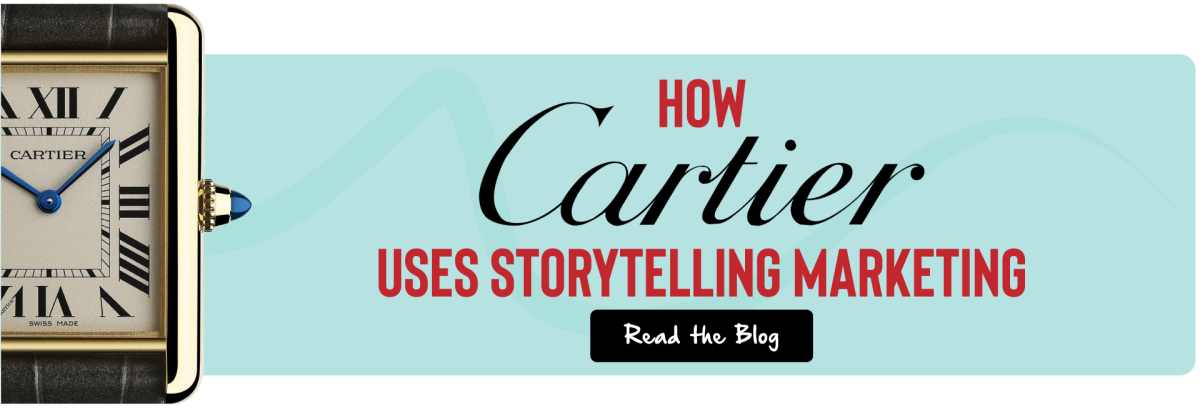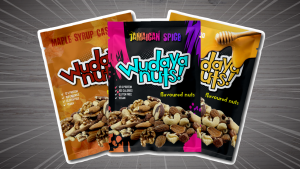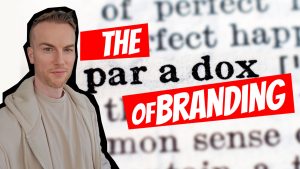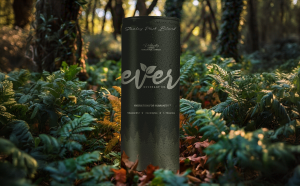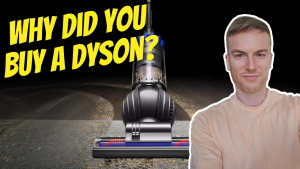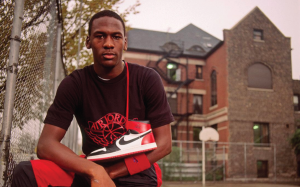Branding is Like Gravity: Consumers Gravitate Toward Brands they Know and Trust

Branding is like gravity.
Consumers gravitate toward brands they know and trust. The bigger the brand, the stronger the pull. When comparing brands within a category, the brand with the strongest pull is the one that is most likely to attract the most buyers.
Think about the next time you’re shopping, or selecting a movie. You naturally gravitate toward the brands you recognize and trust. In the case of movies, you may be drawn to ones with actors or directors that you know and trust.
This is because we as consumers have anxiety when we’re shopping, whether we are conscious of it or not. We want to know we are making the right decision. So going with a reputable brand is all about minimizing risk and anxiety while maximizing comfort and satisfaction.
Becoming the Category
Sometimes brands reach a point where their branding is so synonymous with their category, that they become the category (Google, Kleenex, Tylenol, Velcro, Rollerblade, Q-Tips…).
In such cases, their gravitational pull is inescapable.
When you think of search engines, you cannot help but think about Google.
But how did these brands get there? Let’s look at Google. They had a lot going for them.
👉 Being the best (accuracy, speed, relevance, etc.)
👉 Innovation
👉 Integration
👉 Expansion
👉 User-Friendly Interface
If your target customer thinks of your category, and your brand doesn’t come to mind, or isn’t their first choice, then you have a branding issue.
When you hear Rolex, you likely think luxury.
When you think of window cleaner, Windex likely comes to mind first.
When you think of Tesla or Apple, you may think of innovation.
Adding a Nike Swoosh to a shoe suddenly makes it “cool”.
All of these are examples of how brands have permeated into the minds of the consumer.
Because it gives them a little more piece of mind. They know the brand’s reputation, can trust its quality, reliability, and craftsmanship, know that they have a warranty, return policy, and customer support if anything goes wrong. It’s all about minimizing risk or anxiety while maximizing comfort and satisfaction.
How to Build Trust and Alleviate Anxiety in Consumers
Consumers have anxiety whenever they spend money.
Whether or not they are aware of it.
They want to ensure their hard earned money is being spent well on purchases they won’t regret.
Ultimately customers are look to alleviate this anxiety by maximizing satisfaction and minimizing risk.
The higher the amount spent, the more anxiety they will have.
So how do you remove anxiety?
You use the following trust signals:
👉 Professionally designed and functioning website
👉 Professionally designed branding / packaging
👉 Widespread distribution
👉 Social proof logos on your site
👉 Customer testimonials
👉 Video
👉 Behind-the-scenes social media content
👉 3rd party verified case studies
👉 Blog posts, white papers, ebooks
👉 Partner network
👉 Longstanding history
👉 About us page
👉 High following count
👉 Podcast
👉 Sponsorships
👉 Awards, certifications, 3rd party rankings
👉 Booths at in-person events
👉 Billboards
👉 Word-of-mouth positive reputation / referrals
👉 High employee count
👉 Mid / high pricing
👉 Free trial
👉 High SEO rank
👉 TV and Radio ads
Why would a company go to the trouble of doing all the above, just to scam you instead of running a real company.
The more of the above you can do, the better your odds are at standing out and attracting customers to you.
All these things require time, money, require high-level strategy and execution, but are necessary for the longevity of your company.

- Related post:
How Patek Philippe Could Use Storytelling Marketing
Overcoming Buyers Remorse
Many of us as buyers have anxiety when we’re shopping, whether we are conscious of it or not. We worked hard for our money and we want to know we’re making the right decision.
Would you buy a large appliance, an expensive electronic device, or a car from a brand you’ve never heard of? What if there was a brand you have heard of and trust right next to it, for equal or slightly more expensive? Nine times out of ten, consumers would not only select the brand they know and trust, but even pay a little more. Why?
Because it gives us a little more piece of mind. If we know and trust a brand’s reputation, we can trust its quality, reliability, and craftsmanship, we know they have a warranty, a return policy, and we are reasonably sure we can get a hold of customer support if anything goes wrong.
As stated above, it’s all about minimizing risk or anxiety while maximizing comfort and satisfaction.
Branding is Playing the Long Game
If you don’t plant seeds, there will be nothing to harvest.
Branding and content marketing are a lot like planting seeds. Will it give you something to harvest tomorrow on next week? No, probably not. But over time it will, and it may be just the thing that carries you through the long winters.
Paid ads, on the other hand, is a lot like picking what’s already grown. That may be enough to keep you going for a while, but you’re not the only picker out there… and picking gets expensive.
What happens when your ROAS is in a steady decline and your CAC eats up all your margin?
Branding is a way for you to attract customers organically without the reliance on ad spend. This is because you’ve established market salience through an omnichannel content marketing strategy. You have shown your expertise, authority, and trust through various forms of content from – video, podcast, blogs (not just your own, but as a guest), webinars, events, social media on multiple platforms.
With this approach, you can eventually scale back your paid media spend and reach critical mass.

Reaching Critical Mass in Business
What is critical mass?
In the context of business, critical mass is a term used to describe a company that has reached a sufficient size, scale, or momentum to carry itself on its own without the reliance on paid media. Customers come to you because you have a trusted name. People aren’t finding Nike by searching, “comfortable running shoes for men.” No, they are going to Nike.com. Nike has built a brand that has meant something to a lot of people for decades. To some Converse, New Balance, Fila and Adidas has done that for them.
What is Branding?
So what is branding?
Branding is more than just a logo or a name; it’s the holistic representation of your business’s identity, values, and promise to customers.
It’s the story you tell, the emotions you evoke, and the experiences you create. Effective branding sets you apart from competitors, builds trust and credibility, and fosters loyalty among customers.
It’s the cornerstone of your marketing efforts, driving recognition, preference, and ultimately, growth. Investing in branding is not just about creating a memorable logo or slogan; it’s about crafting a compelling narrative that resonates with your audience and creates lasting impressions.
An investment into branding will allow you to scale back on your ad spend over time and allow your name to attract customers.
The winter is coming, my friends. Bundle up.
So instead of running a business solely on ads, you should instead look to branding and content marketing (this includes social media marketing) that allows you to demonstrate your brand values in an interesting and entertaining way.
Once you’ve established your expertise, authority, and trust in the marketplace, and you target the right audience, once they have a pain in which your solution can solve, they will think of you first and come to you.
It’s all about branding.
The Importance of Branding
Why is branding important?
One of the main reasons why branding is so important is market differentiation. I’ve written a lot about the idea of – you either have a brand, or you have a commodity.
Essentially, what is your brand about if you cannot talk about your product? What is your social feed about if you can’t talk about your product? Whatever that thing is, is the DNA that is baked into your brand and what it stands for. This is how North Face is different than Patagonia, which is different than Arc’teryx. Features and ingredients can be copied. Package design can be mimicked. But branding is much more difficult to replicate. This is why branding is so important – to create clear distinction in the minds of the consumer.
I talk about that in this post – The T-Shirt Theory of Branding.
On a more practical level, branding is also a way for you to attract customers organically without the reliance on ad spend. This is because you’ve established a strong market saturation through your expertise, authority, and trust. With this approach, you can eventually scale back your paid media spend and reach critical mass.
The winter is coming, my friends. Bundle up.
So instead of running a business solely on ads, you should instead look to branding and content marketing (this includes social media marketing) that allows you to demonstrate your brand values in an interesting and entertaining way.
Once you’ve established your expertise, authority, and trust in the marketplace, and you target the right audience, once they have a pain in which your solution can solve, they will think of you first and come to you.
It’s all about branding.
The Challenges of Branding
What are the challenges or drawbacks of branding?
I’ve been touting the benefits of branding, or brand building, but as discussed earlier about planting seeds, often these efforts take a long time to see a return. Speaking of return, you cannot think of ROI when it comes to branding. It’s impossible to measure.
Think of it as a long-term investment.
As with any investment, you will not likely reap what you sow this week or next month, but at some future state.
Branding is not sales, branding is all about making future sales easier.
Most brands don’t have the financial runway to wait around for their branding efforts to take off.
- Related post: The T-Shirt Theory of Branding
- Related post: The Power of Branding: John’s Family Premium Organic Garlic
- Related post: Why You Don’t Want to Run a Business that Relies Solely on Ads
Related Posts
Need help with your marketing activities?
If you’re looking to make a move with your marketing, reach out to us. We are priced fairly, we’re straight shooters, and are the very best at what we do.

